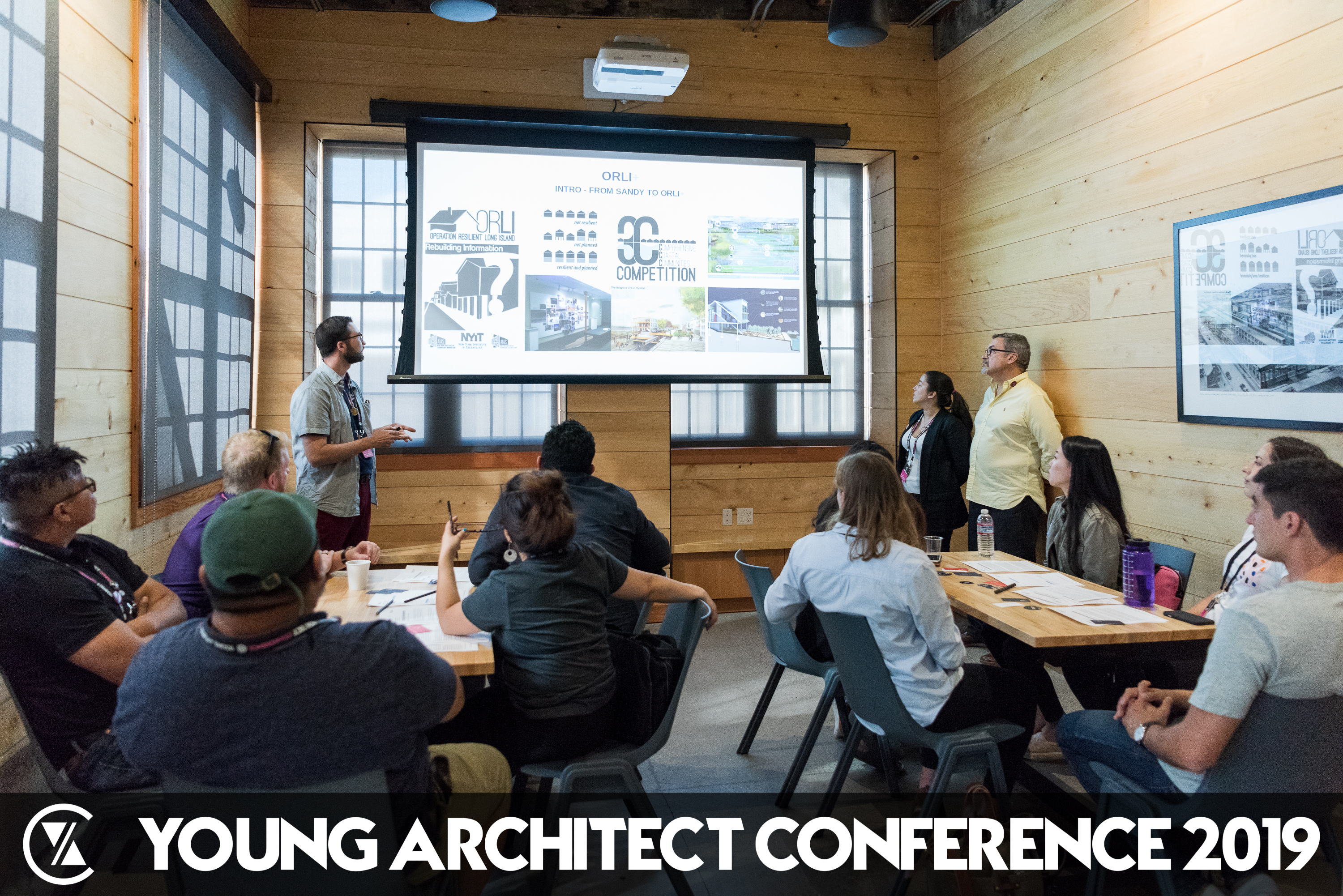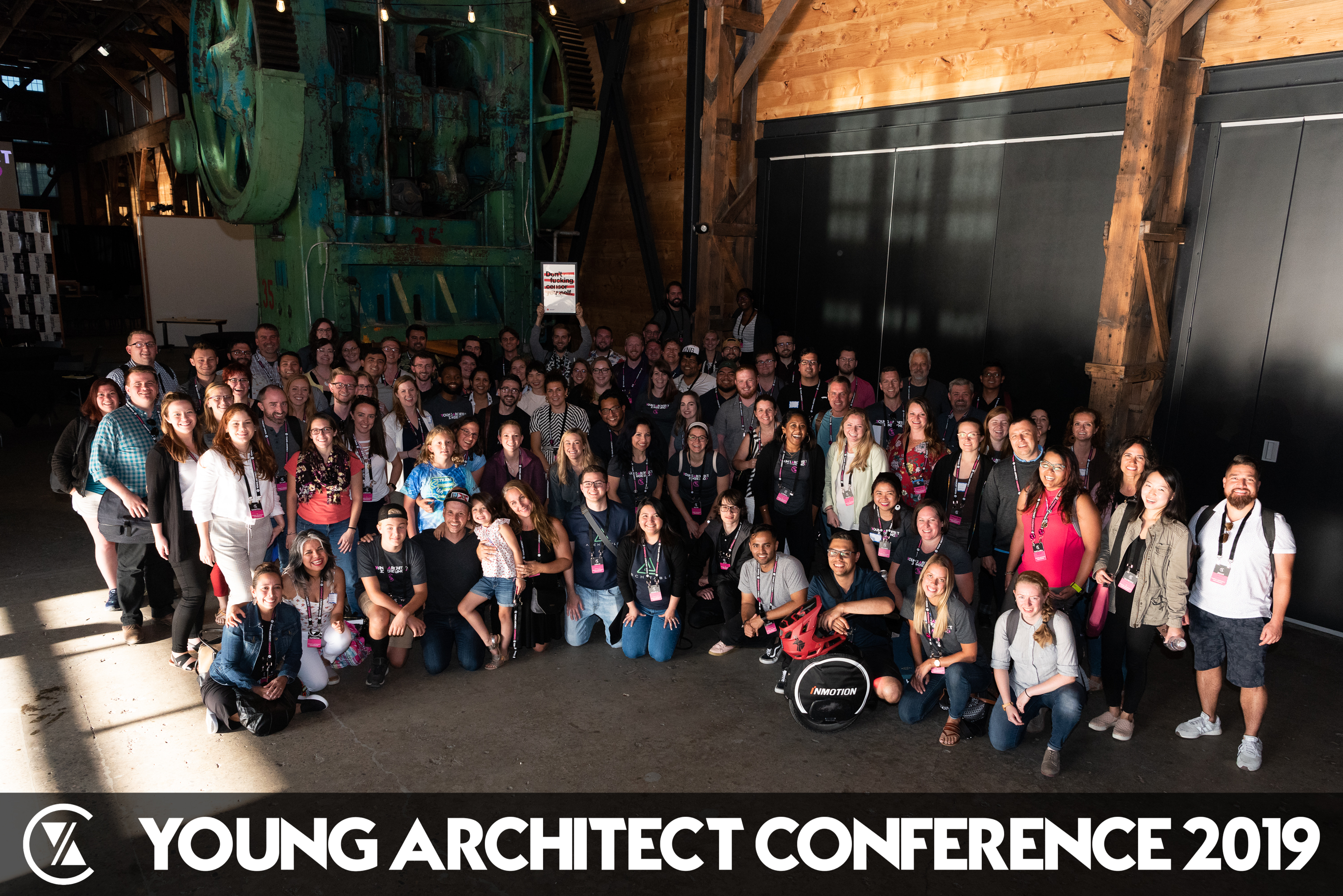Architects: Showcase your next project through Architizer and sign up for our inspirational newsletter.
The debate around the purpose and utility of architecture conferences has gone on for many years. Their questionable value is largely down to the fact that they are conflated with AEC trade shows, meaning that their primary focus is more about products than it is about the profession. The demographic of these shows has also tended to skew older (a fact that, while evolving, remains the case), and their schedule is designed to cater to established players in the profession. As a result, many young and aspiring architects feel disconnected from these events, unable to find relevance besides grabbing themselves a few obligatory CEU credits.
In short, most architecture conventions suck.
Enter the Young Architect Conference. Designed and delivered by Michael Riscica of Young Architect, #YARCHCON19 was created with emerging professionals specifically in mind. Taking place at the end of August, the event was a huge success, bring together a community of architects from across the United States and beyond to learn from, connect with and inspire each other. What made this conference so different, and why does it set a new bar for architecture conventions? Here are just a few key factors…

An Amazing Venue
The Young Architect Conference took place at the Redd on Salmon, an extraordinarily beautiful events space in Portland, Oregon. Unlike the typical convention centers, complete with the world’s worst carpets, this former factory building is full of details to make architects swoon: huge, industrial windows, giant pieces of dormant machinery and raw, exposed materials abound. More importantly though, informal seating, ample open spaces and break-out areas within the venue made a significant difference to the dynamic of the conference. The venue’s layout was designed to foster connections, encouraging conversations among speakers and attendees alike.

No Sales Overload
This was perhaps the biggest differentiator between the Young Architect Conference and just about every other industry convention in existence: There were no building product representatives at the venue. Manufacturers’ booths, so often the dominant feature of conferences around the globe, were deliberately omitted to allow the architectural profession itself to take center stage. This gave emerging professionals the time to talk to each other without the distraction of salespeople attempting to sell them the latest tiles, timber floors and toilets.

Relevant Workshops and Keynotes
As well as eschewing sales representatives to allow attendees the breathing room to engage, the workshops and keynotes were 100% geared towards young architects. Speakers ranged from architects to work culture experts and entrepreneurs from outside the profession, all with a common goal — to help nurture and encourage the next generation of architects to be successful. The focused nature of each speech and workshop meant every session was perfectly crafted for its audience, providing them with genuinely valuable advice for their next career steps.

Diversity and Equality
The Young Architect Conference was notable for the demographics of its speakers and attendees. Women made up the majority of the keynote speeches, while professionals and entrepreneurs of all ethnicities and parts of the world played crucial roles throughout the weekend. Far from the old-white-male dominated conferences everywhere else, the diversity in the room during #YARCHCON19 was a true reflection of the architectural profession today, and aspiring architects from all backgrounds felt empowered to participate as a result.

A Growing Community
All of the above ingredients added up to a conference of connection. By the time the closing party came around — or “rager”, as founder Michael Riscica accurately described it! — it felt like almost everyone at the event knew about each other in some way, whether through personal discussions or broader presentations. Unlike most conferences, where trying to cover the show floor feels unrelentingly exhausting, the Young Architect Conference forged a series of what promise to be long-lasting professional relationships.
Taken altogether, these differentiators resulted in an architecture conference unlike any that has come before. It was fun, educational and culturally relevant to the profession, but most of all, it was pioneering. Heads of other conferences across the profession should look to the Young Architect Conference as a new precedent in how to create a truly valuable event for architects, young and old — there is much to be learned from its success. We can’t wait to see what #YARCHCON20 brings.
Architects: Showcase your next project through Architizer and sign up for our inspirational newsletter.
All photographs courtesy of Young Architect and Timothy Niou Photography




